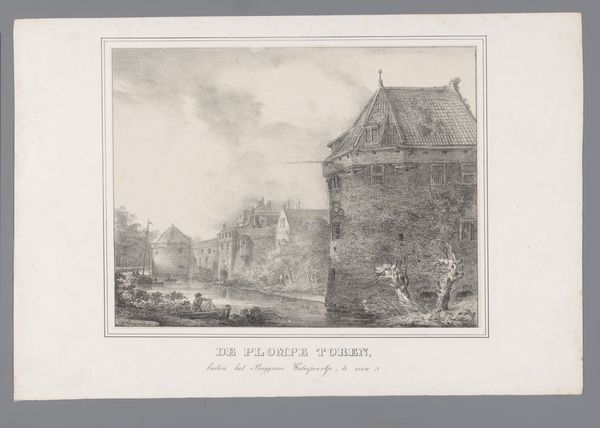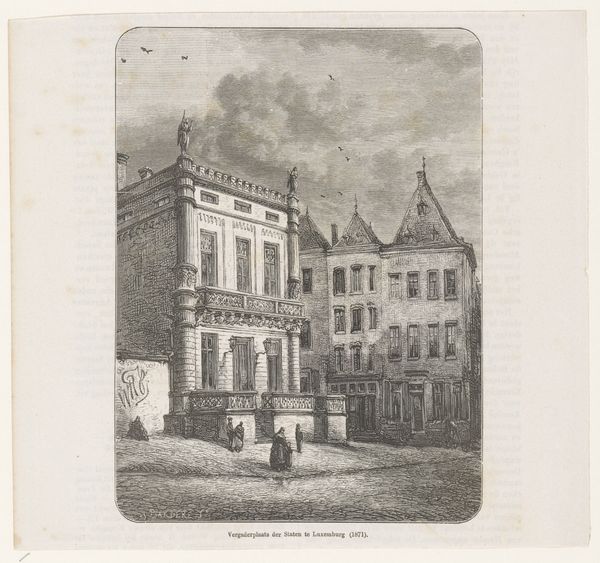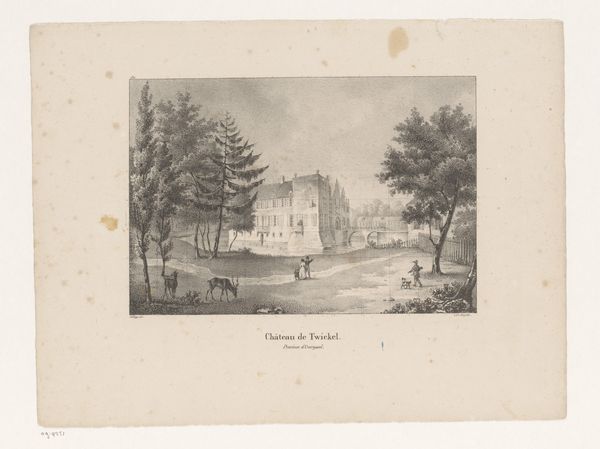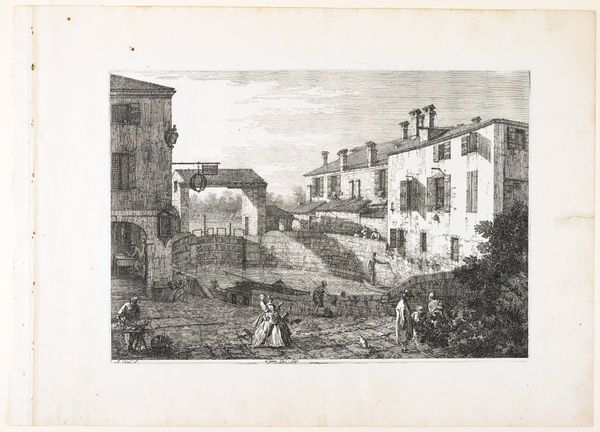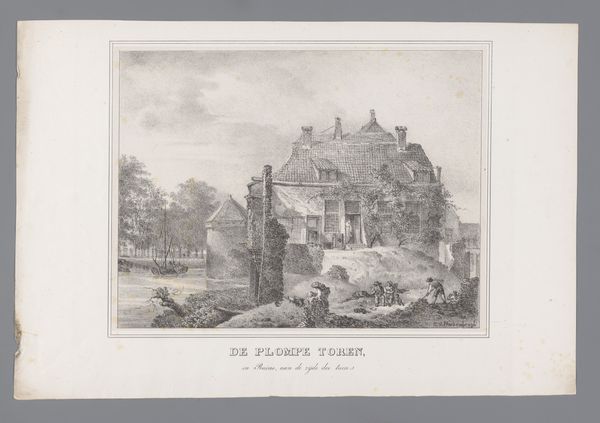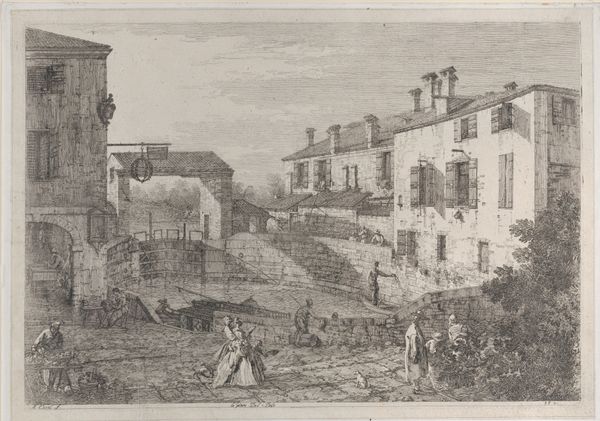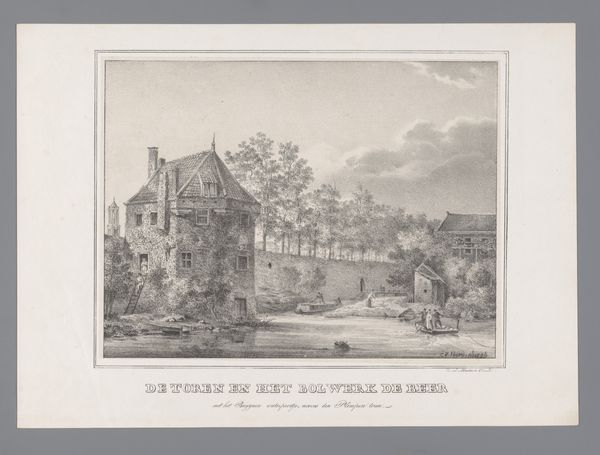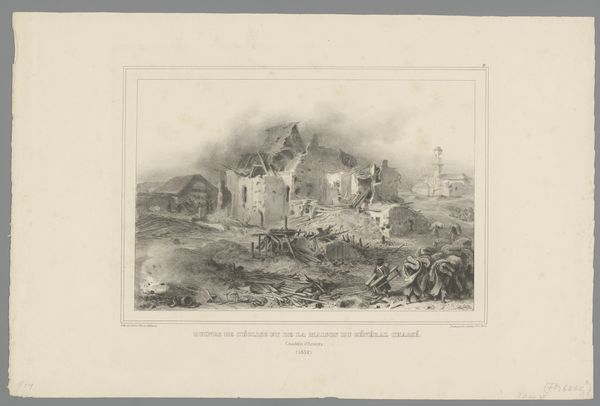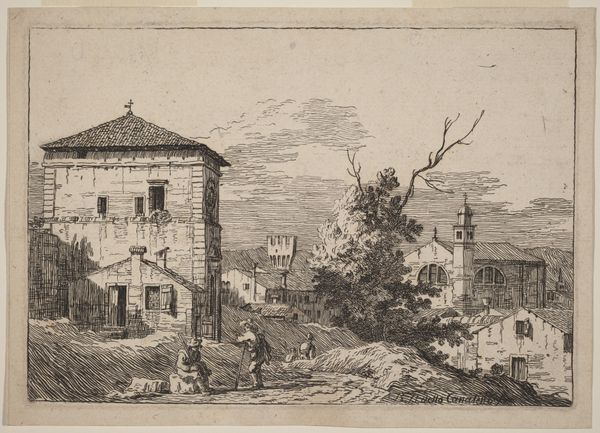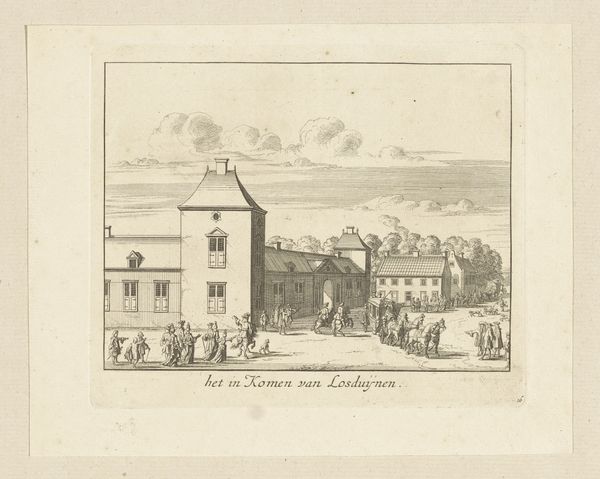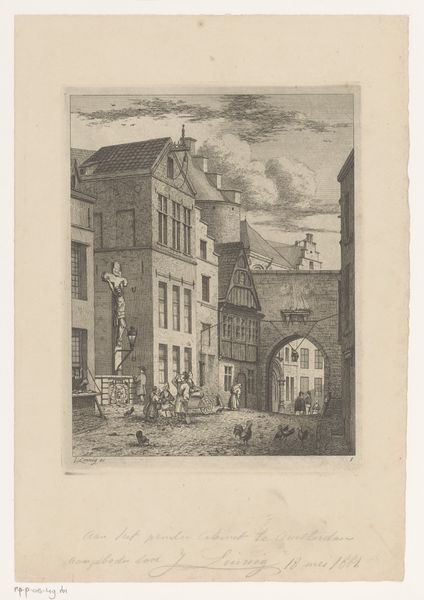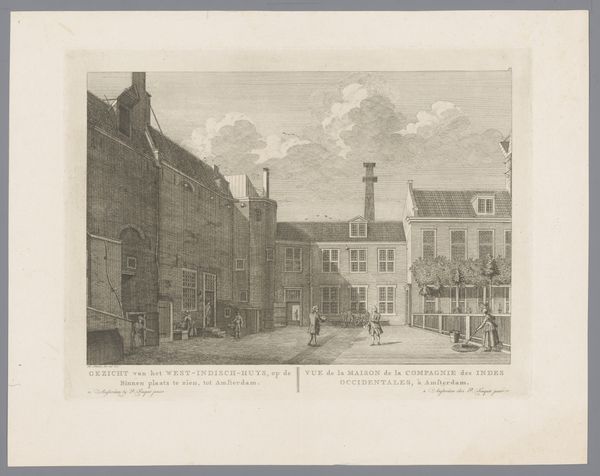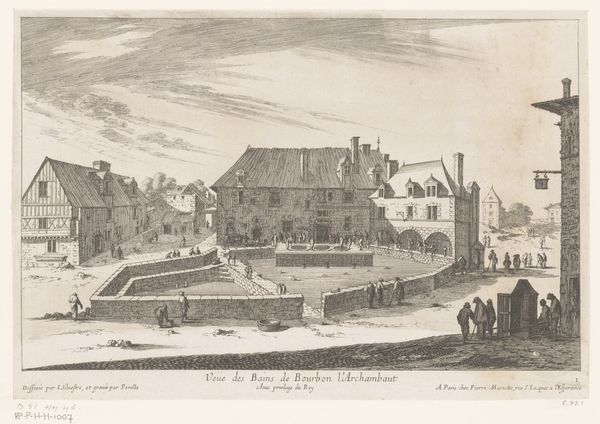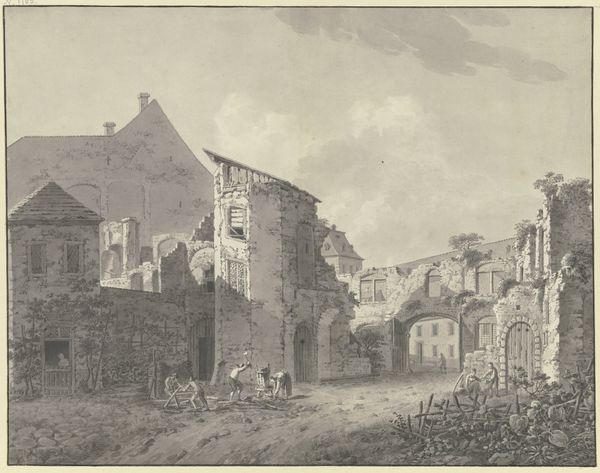
drawing, print, etching
#
drawing
# print
#
etching
#
romanticism
#
cityscape
Dimensions: height 280 mm, width 422 mm
Copyright: Rijks Museum: Open Domain
Curator: So evocative! At first glance, this artwork whispers quiet mornings and the subtle drama of daily life. It's an etching titled "Plompetoren in Utrecht vanaf de stad gezien," or the Plompetoren Tower in Utrecht, viewed from the city. The artist is Cornelis van Hardenbergh, and it likely dates from between 1809 and 1843. Editor: It does possess a certain quiet dignity. Knowing it depicts the Plompetoren offers immediate context. Towers like this served both defensive and symbolic roles within cities, embodying civic power, while simultaneously offering protection. I’d also observe that such vistas of ordinary people emphasize a romantic theme: that progress is driven from common folk rather than simply dictated top down. Curator: Yes, exactly! You can almost smell the river and hear the everyday chatter. It feels grounded, despite the tower looming in the background. See how it contrasts: ordinary and extraordinary meet, a beautiful representation. There's such incredible detail in such delicate line work. Editor: This scene speaks of Romanticism but also realism in how buildings like this began to dominate urban planning, reshaping city skylines both economically and socially. This etching underscores just how pervasive institutional structures really were when creating civic pride during that time period Curator: True, it reflects broader social sentiments toward community. A gentle reminder of resilience perhaps. And technically it really shows an expertise—it gives you a peek at ordinary urban life two centuries removed. It serves as historical record Editor: That is perhaps what compels me the most: the intersection between everyday experience woven intricately against these monuments of the city, structures erected purposefully intended show what lasts for everyone. It encapsulates not only social pride back then, as reflected across its own time period within art history proper but resonates ever further given context of now. Curator: It's a poignant testament to moments that pass. It makes us ponder permanence. Editor: Definitely causes contemplation concerning where future stories get composed next generation after generation now, within very same spaces envisioned those bygone ages we gaze presently back behind through!
Comments
No comments
Be the first to comment and join the conversation on the ultimate creative platform.
